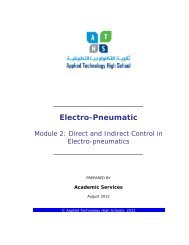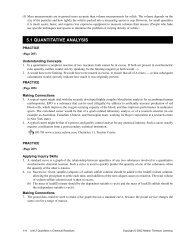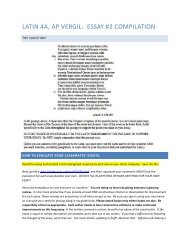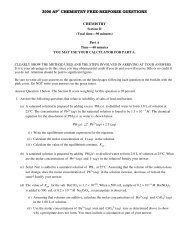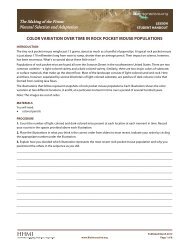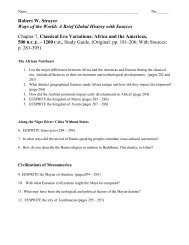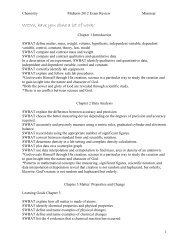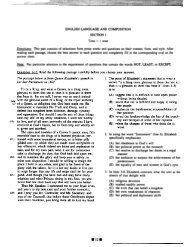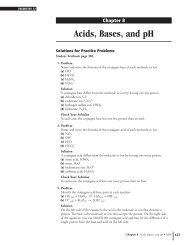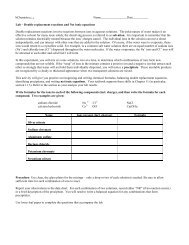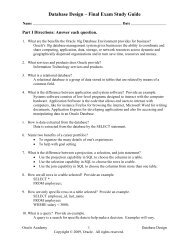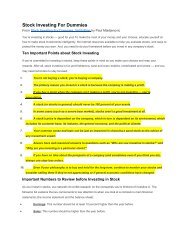Create successful ePaper yourself
Turn your PDF publications into a flip-book with our unique Google optimized e-Paper software.
e. 2.48 mL<br />
____ 23. Which of the following statements about density is incorrect?<br />
a. The densities of gases are usually expressed in units of g/L.<br />
b. The intensive property density can be calculated from the two extensive properties: mass<br />
and volume.<br />
c. The densities of liquids are usually expressed in units of g/mL (or g/cm 3 ).<br />
d. If oil and water are placed in a container, they form two layers with oil as the top layer<br />
because it has the greater density.<br />
e. Densities of gases change greatly with changes in temperature and pressure.<br />
____ 24. Liquid propane boils at 231K. What is its boiling point in C ?<br />
a. 42 C<br />
b. 315 C<br />
c. -42 C<br />
d. 504 C<br />
e. -231 C<br />
____ 25. Methane, CH4 , boils at -162 C. What is the boiling point of methane in F?<br />
a. -58 F<br />
b. -108 F<br />
c. -260 F<br />
d. -323 F<br />
e. -464 F<br />
____ 26. How many kilojoules are equivalent to 565 calories?<br />
a. 130 kJ<br />
b. 930 kJ<br />
c. 0.135 kJ<br />
d. 2.36 kJ<br />
e. 2360 kJ<br />
____ 27. What is the specific heat of a 5.75 g piece of metal if the addition of 175 joules of heat causes a 22.3 C<br />
temperature increase?<br />
a. 1.36 J/g• C<br />
b. 4.18 J/g• C<br />
c. 1.11 J/g• C<br />
d. 0.73 J/g• C<br />
e. 1.54 J/g• C<br />
____ 28. If a 10.0 g ball of iron at 160.0 C is dropped into 50.0 g of water at 20.0 C in an insulated container, what<br />
will be the final temperature of the water? The specific heat of iron is 0.444 J/g• C and that of water is 4.18<br />
J/g• C.<br />
a. 23 C<br />
b. 38 C<br />
c. 48 C<br />
d. 82 C<br />
e. 110 C<br />
____ 29. Which of the following statements is not an idea from Dalton's Atomic Theory?<br />
a. An element is composed of extremely small indivisible particles called atoms.



